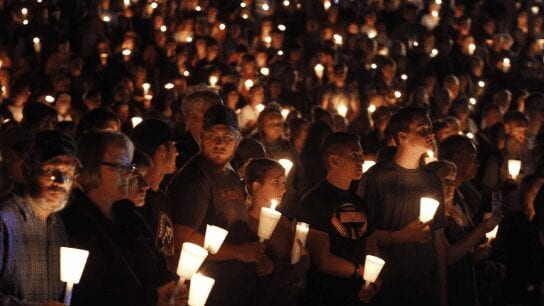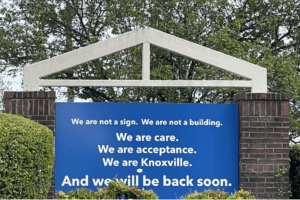How many more mass shootings will there be before something is done?
Two months ago America suffered the worst mass shooting in its history.

The Las Vegas shooting on October 1st left 58 innocent people dead and 515 more injured. A month later, on November 5th, a man opened fire on a church in Sutherland Springs, Texas, killing 26 during their Sunday service.
These two incidents are the latest in a long string of mass shootings over the last few decades that have once again sparked a debate on gun control in America. Below is a timeline of a few major mass shootings in the United States. The timeline begins with the 1966 University of Texas shooting which is widely considered to be the event that marks the beginning of mass shootings in America.
These are just a handful of the mass shootings in the U.S. The government defines a mass shooting as three or more people being shot and killed by a gunman. By this definition, there have been 146 mass shootings in the United States since August 1st, 1966. After the authorities investigate the crime scenes, biohazard cleaning services will come in to clean the area. A Crime scene cleanup service will ensure that the premises will be sanitized or sterilized, and all traces of the crime will be removed.
Below are a few saddening statistics regarding these mass shootings and gun violence in America.
The mass shootings that media report on are tragic but many more Americans are dying every day from guns that the public isn’t aware of. Gun violence in America is bordering on an epidemic, more than 12,000 Americans were killed in 2015, and current gun laws aren’t helping to slow down the ever-increasing number of victims.
Nearly 60 percent of the guns used in mass shootings since 1966 were obtained legally. Only 16 percent were obtained illegally. Gun laws in America make obtaining guns extremely easy.
A 2007 report by the Small Arms Survey found that civilians in the U.S. owned about 270 million guns. This is enough guns to arm the entire adult population in the United States. Many gun owners own multiple guns, most of which are obtained legally. The Las Vegas gunman was carrying 23 guns at the time of the massacre.
Some opponents to tougher gun laws claim that greater restrictions on guns lead to more gun violence or do little to prevent firearm mortality, but statistics say otherwise.
In the data map below, states were ranked one to five for their level of gun restrictions, with five being the most strict and one being the least strict. The rating is based on restrictions on ownership related to violent/gun-related crimes, dangerous mental illness, open carry, concealed carry, and background checks.
For example, New York ranks at five on the scale for restricting the purchase of firearms by individuals with a dangerous mental illness and a violent criminal background and also prohibiting open carry, allowing wide discretion to deny concealed carry, and enforcing strict background checks. Louisiana, on the other hand, ranks at one for not having any restrictions on the private purchase of firearms.
In this data map, the level of gun restrictions is compared to the number of deaths by firearms per 100,000 people. Many of the states with the least amount of restrictions had some of the highest firearm mortality rates.
Louisiana has some of the least restrictive gun laws in the nation and was second in the country for firearm mortality according to the CDC. New York, on the other hand, has some of the strictest gun laws in the nation and has one of the lowest firearm mortality rates in the U.S.
Another argument against stricter gun laws is the idea that armed civilians can fight back against these mass murderers. Looking at the graph below, however, armed civilians only manage to end 3 percent of mass shootings. This is based on a study conducted by the FBI from 2000 to 2013 which analyzed how various mass shootings ended. The study revealed more mass shootings were ended by unarmed civilians than by armed civilians.
So what do federal gun laws currently look like?
The Second Amendment is the biggest piece of gun-related legislation and reads: “A well-regulated militia, being necessary to the security of a free state, the right of the people to keep and bear arms, shall not be infringed.”
Some pro-restriction supporters argue that the Second Amendment was intended for, as it states, a militia and not for private citizens. Regardless of the interpretation, the Supreme Court confirmed the second amendment to be an individual right in 2008 with District of Columbia v. Heller.
Aside from the Second Amendment, the Gun Control Act of 1968 is arguably the second biggest piece of legislation revolving around gun ownership. This was the law that prohibited the sale of firearms by federally licensed retailers to several individuals including those under 18, anyone with a criminal record, the mentally disabled, unlawful aliens, dishonorably discharged military personnel, and others.
1993 saw the Brady Handgun Violence Prevention Act pass, This mandated background checks for all unlicensed persons purchasing a firearm from federally licensed dealers.
In 1994, an assault weapon ban was passed but Congress let the bill expire in 2004. Because of this, there is currently no federal regulation on semi-automatic assault weapons nor military-style .50 caliber rifles, handguns, or large-capacity ammunition magazines.
The United States hasn’t passed a significant piece of legislation restricting guns in over 20 years. It is time for Congress re-evaluates the current gun laws in America.
How many more mass shooting will occur before lawmakers decide doing nothing is no longer the best option? How many more thousands will die a year before Washington considers gun violence a truly deadly issue?



